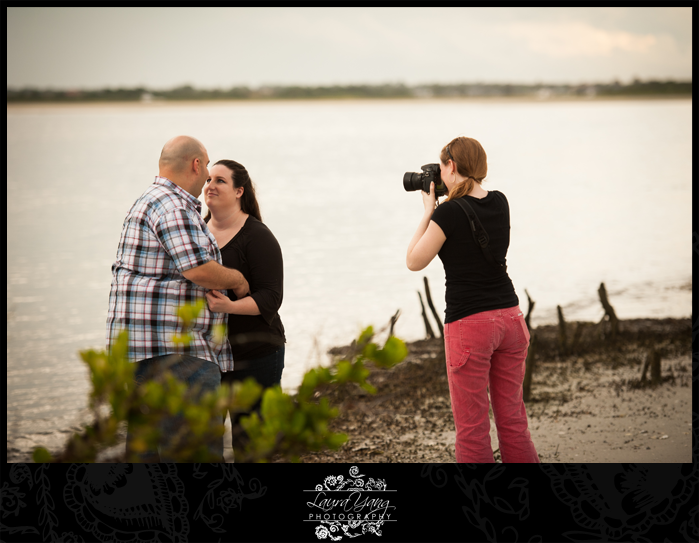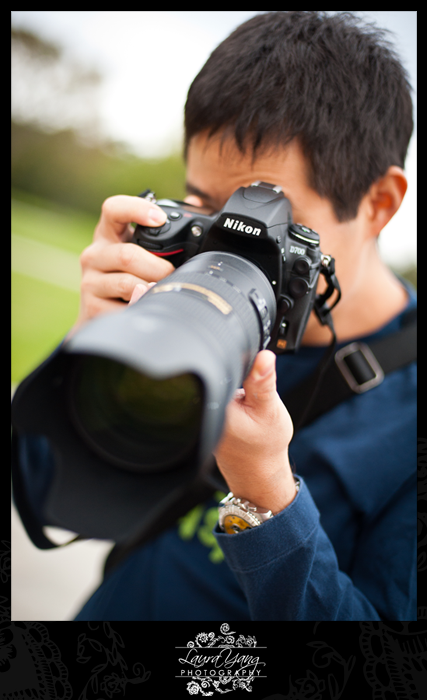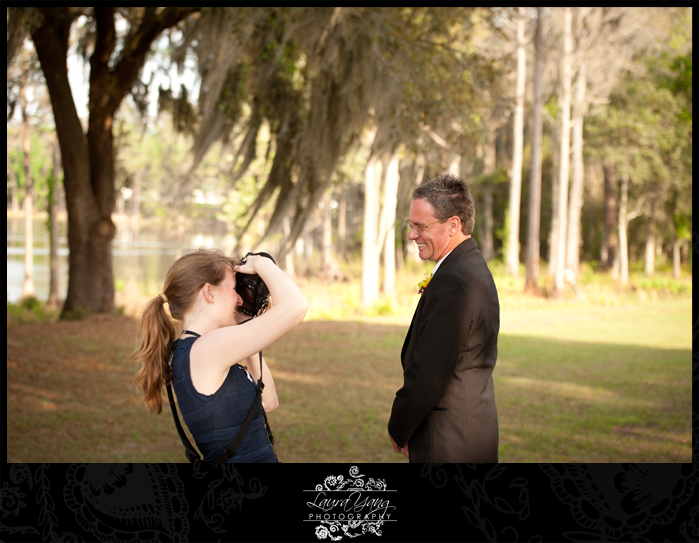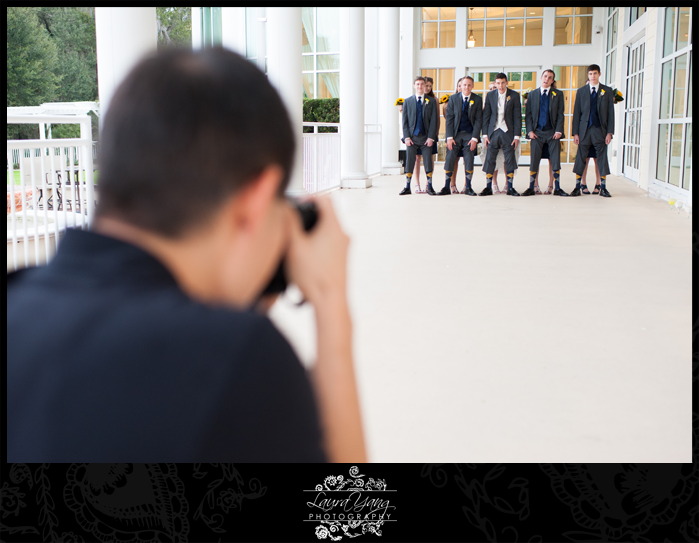Note: Photographers’ Friday is a weekly blog series directed toward professional photographers, and in some instances, serious amateur photographers. All Photographers’ Friday blog posts will assume that readers have a basic working knowledge of digital SLR cameras, but if you’re left with questions or don’t understand any of the information, don’t hesitate to ask. We love e-mails!
—
It feels so, so long ago. In the grand scheme of things, it wasn’t a long time ago. In terms of how much we’ve learned and accomplished, it was eons ago. It was four cameras and eight lenses and thousands upon thousands of photographs and countless hours at workshops and lectures and studying and practicing ago.
When Danny and I launched our photography business, all we knew was that one door had closed for me recently, and I saw another one squeaking open. That opening was just a sliver at first, but I was ready to kick that door wide open if need be. I wanted to be a photographer! Photographers had the best job ever! We could do it together!
Those three things were true. What I didn’t consider at the time was just how much work it takes to get a small business off the ground. How much time it takes to not just become comfortable directing people in front of your camera, but directing them under less than ideal circumstances in extremely tight time frames. How much rejection is a staple in a business where people are deciding whether or not they want to trust you with the biggest day of their life thus far — or think you’re worth spending their hard-earned money on when there will always be someone cheaper just another web search away. I also didn’t realize how rewarding photography could be. Since that day when I timidly told Danny, “I want to be a photographer,” this has evolved from an interest to a passion to a lifestyle. Many of the people I feel closest to these days are other photographers . . . who are scattered around the country and I rarely speak with except online. Everywhere Danny and I go these days, we comment to each other, “What a gorgeous setting for an engagement session,” or, “Man, this light is so good right now, I wish we had a couple here just to take a few shots!” Photography is my day job, you see, but it’s also a day job I don’t exactly leave behind at the office.
I also didn’t realize how rewarding photography could be. Since that day when I timidly told Danny, “I want to be a photographer,” this has evolved from an interest to a passion to a lifestyle. Many of the people I feel closest to these days are other photographers . . . who are scattered around the country and I rarely speak with except online. Everywhere Danny and I go these days, we comment to each other, “What a gorgeous setting for an engagement session,” or, “Man, this light is so good right now, I wish we had a couple here just to take a few shots!” Photography is my day job, you see, but it’s also a day job I don’t exactly leave behind at the office.
All that said, the road to building our photography business could have been smoother. So I thought I’d share a few of the lessons we’ve learned. New or aspiring photographers, this is for you!
1.) You are not in this alone.
When we first started, I was really wary of other photographers. I was convinced already-established photographers would look down their noses at me, or be angry at me for deciding to jump into an already-overcrowded market. So I steered clear of anyone else with a camera and a website. The result was that Danny and I were dog paddling along, just trying to see what might be over the next wave of work coming our way. Things have changed! We discovered some wonderful sources of community — Pursuit 31 and Showiteers (the Facebook group for people who use Showit websites) being the two most important to us. We’ve made friends with other photographers, local and scattered quite literally all around the country. Having a photography community has both helped us develop our business far more rapidly than before, and has been a huge source of encouragement — and learning opportunities — for us.
2.) The resources you need are out there.
You don’t have to reinvent the wheel for yourself. Learn from others who have already blazed that trail you’re setting out on. We turned to the internet and found all sorts of goodies, from other photographers’ blogs to online workshops, for photographers who are eager to effectively manage their business and hone their craft. A few that have been the most helpful to us along the way:
creativeLIVE
Jasmine Star
Zach & Jody
Framed Show
Justin & Mary
Katelyn James
PPA
3.) If you’re going to look to other photographers for inspiration, look to the best of the best — not just the people in your town.
This is one of the biggest things that helped us grow quickly, in both our business sense and our photographic knowledge. After the first few months of muddling along, we stopped looking at the other photographers in our area to gauge what a successful, exceptional photography business should look like. Instead, we broadened our scope, looking to photographers who had been named among the best in the world, and whose businesses were thriving nationally and internationally. We formed our ideas about what we wanted our business to be after examining the best of the best — which set the bar pretty high right from the start. 4.) Honing your craft is far more important than booking jobs.
4.) Honing your craft is far more important than booking jobs.
In the early days, it was hard not to get discouraged. The jobs weren’t exactly rolling in. But in hindsight, that was the best thing that could have happened to us, because it gave us ample opportunity to continue practicing without the pressure of satisfying paying clients. We practiced on friends. A lot. In the first six months of business, we did far more free shoots for friends than jobs for paying clients. And that was great. We built a well-rounded portfolio that we were very proud of, and by the time we got to the point that we were getting steady inquiries, we had the confidence to charge the amount of money we knew our time and talent was worth. Which leads me to . . .
5.) Price yourself to cover your business expenses and compensate yourself for your time.
You may just be starting out, but once you decide to make it official and start charging for your work, you need to charge enough to cover your business expenses and pay yourself for the hours of hard work you put in. Now, I’m not telling you that you have to come out of the gate charging several thousand dollars for a wedding — but if you’ve put in enough work and practice and already have experience from shooting for free and/or second shooting for other photographers, that might be exactly what is right for your business. But at the very least, you need to calculate out how much it costs you to run your business, how much it costs you to shoot and deliver each event or session, and how many weddings or sessions you believe you’ll be able to reasonably book each year. A quick story: When we first started the business, we decided to charge what we now consider an unreasonably low price for weddings, given the hours and hours of behind-the-scenes work involved in each one. After taxes, that price would hardly cover our wedding-related expenses, much less compensate us for all the time and hard work we would that is required for every wedding. And you know what? We didn’t book a single wedding at that price. Looking back, I think that was God sparing us the anguish of working at a loss. For more precise help than I can offer here, check out the fantastic Stacy Reeve’s Pricing Guide. Reading this convinced Danny and me right away that we needed to at least double our prices if we were going to have a self-sustaining business. Because, remember: If you’re paying to run it, it’s not really a business. It’s an expensive hobby. (PS: Shortly after we doubled our prices, we started booking. No joke.)
6.) Run your business to get to the place you want to be instead of letting your business wander aimlessly.
My guess is that, like me, you started out with a pretty fuzzy vision of what you wanted your business to be and where you wanted it to take you. But I’m here to tell you that figuring that out is the only way you’re going to ever get there. You don’t have to know right away, of course, but always be on the lookout for the answer to what it is you really want your business to do for you. Do you want to book destination weddings so you can travel the world while working? Great. Then you can’t spend your time marketing newborn sessions and expect that to happen. Is your heart really in creating fine art studio portraits for families? Great. Then you won’t want your website to appeal to artsy, edgy brides. Regardless of what your business goals are, you need to define them in order to create a business that can accomplish those goals. Danny and I did the wandering aimlessly thing for a while. It really wasn’t the best. 7.) Your business will not and should not look like everyone else’s.
7.) Your business will not and should not look like everyone else’s.
One of the funny things that comes from being a part of photography communities and following other photographers’ businesses is realizing just how different everyone’s business is — and that you need to find a business model that works for you, not just follow the model another photographer tells you is the key to success. Because a lot of people have found success, and they have found it in a lot of different ways. From successful photographers I have heard each of the following: “Search engine optimization is no longer important,” and “Search engine optimization is the # 1 way I get business”; “Word of mouth is far more effective than paid advertising” and “Advertising with _____ is how I booked most of my weddings this year”; “Don’t give people the digital files — selling prints is the way to run a photography business” and “I give all my clients their digital files — I charge enough money up front that it doesn’t matter if I sell anything after the fact”; “Market yourself based on what makes you unique, because to the untrained eye, your photography doesn’t look significantly different from anyone else’s” and “My business is about my photography, not me, so I don’t believe in making myself the focus of my business”; “Blogging is outdated because everyone just uses Facebook now” and “I get more inquiries through my blog than from any other source”; “Become friends with your clients so your business feels personal” and “Keep your relationship with your clients professional and at arm’s length.” Everyone who has said these things is or was running a successful photography business. They were just different from each other. Yours will be different, too. So figure out what you want your business to be like, and don’t feel compelled to make a drastic change any time you hear another photographer say that the way they do things is XYZ.
8.) Get registered and insured soon, because it legalizes and legitimizes your business and gives you extra confidence.
In some states, photographers don’t need a business license until they’ve earned a certain amount of money; in other states, photographers are expected to have a business license and tax ID number before they hang their figurative sign. Regardless, I’m a big advocate for getting licensed right away. You know you’re a “real” business — and you’re far more likely to treat your business like a business — when you’ve got a business license and tax reports to file. Your prospective clients will respect you far more. Then there’s the matter of liability and equipment insurance. Get them. Don’t wait. Many wedding venues require proof of insurance before letting a photographer bring their equipment onto the property, and liability and equipment insurance will put your mind far more at ease . . . and have you covered in case something goes wrong. This is also why I strongly advise joining PPA, which has an indemnification trust for photographers and lawyers on standby to help handle any (heaven forbid!) legal problems. 9.) Brace yourself for a long, slow, challenging journey.
9.) Brace yourself for a long, slow, challenging journey.
Like any small business, it isn’t easy to run a photography business. It’s long hours with your brain going at warp speed. It’s physically demanding 14-hour wedding days when your foot is throbbing because a guest stomped on you on the dance floor. It’s a lot less take-home pay than people who haven’t crunched the numbers assume. It’s booking only one inquiry out of fifteen or twenty. It’s having people criticize your images, your pricing, your workflow, or your website — or maybe not any of those things, but surely something. It’s missing a big event with family and friends because you booked a wedding for the same date. It’s questioning yourself on a regular basis. It’s deciding between a new piece of camera equipment or taking a vacation next year. It’s still smiling as you listen to prospective clients tell you they decided to let their friend photograph their wedding instead because the friend just bought a new camera. It’s dealing with spreadsheets and tax returns and credit card processing companies when numbers really aren’t your thing. It’s practicing off-camera flash in your front yard at 11:00 p.m. at night because you want to make sure you’ve perfected a technique for your next shoot.
All of those are personal examples. But photography is also some other things.
It’s helping a couple make sure their relatives who couldn’t make it to the wedding get to experience the expansion of their family, too. It’s reminding an overwhelmed bride that her husband-to-be loves her far more than he cares about whether their DIY projects get completed. It’s capturing that raw emotion when a daddy sees his baby girl all grown up and beaming in her bridal gown. It’s capturing the last image of a loved one who passes away shortly after the wedding. It’s making friends with people who thought they were just hiring someone to do a job for them. It’s preserving love for the generations that haven’t yet been born. It’s pushing yourself to be more creative than you thought you could.
It’s doing something that will outlive you.
And it really is the best job in the world.
So go into photography. Go with your eyes wide open. Go knowing that you won’t master lighting overnight and that sometimes you’ll be disappointed in yourself, that sometimes this all won’t live up to what you’d hoped for. And that other times, it will soar beyond your wildest dreams.
~ Laura
[…] top photographers out there have achieved their success in entirely different ways — which is a subject I’ve touched on […]
This is exactly what I needed to read tonight. Great Work! Thank you!
Thank you for this, Laura!
Great post Laura, I’m finding all this out, but pushing forward in this journey! I love what I do!
Well said! It’s all quite true : ) I’ve been on this journey for 3 years and counting. It’s been an uphill climb, but the sights along the way have made it worth it!